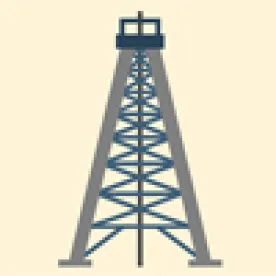Watching commodity pricing is a bit like watching a rollercoaster – it goes up one minute, down the next, then up again and down. Today’s oil prices are no different. We started the day up a bit, and this afternoon we are down a bit – the rollercoaster continues. If you were looking for a lazy river-like pace, with its predictable turns and steady current, commodity pricing is not the ride for you.
This morning, Bloomberg Energy reports the following oil prices, which are up a bit from yesterday:
WTI Crude $4.06 per barrel, a +0.75% change
Brent Crude $1.36 per barrel, a +.075% change
A CNBC headline reads, “A ‘forecasting nightmare’: Volatile Oil Prices are Virtually Impossible to Predict, Analysts Say.” In short, prices are on a rollercoaster and folks are having difficulty predicting where exactly on the ride we sit – are we on the upswing or should we brace for decline?
A number of things have contributed to pricing’s rollercoaster effect, including:
- Supply and Demand – U.S. Inventories are High. According to the U.S. Energy Information Administration’s (“EIA”) Monthly Crude and Natural Gas Production report released March 29, 2019, which can be found here, U.S. crude oil production is increasing. In fact, according to the EIA’s Today in Energy from April 9, 2019 entitled, “U.S. Crude Oil Production Grew 17% in 2018, surpassing the previous record in 1970,” “[a]nnual U.S. crude oil production reached a record level of 10.96 million barrels per day in 2018.”
- OPEC Production Cuts – Plus Global Issues. According to CNN Business article entitled, “There’s Trouble in OPEC and Oil Prices are up 50%,” trouble in 3 OPEC nations, namely, Venezuela, Iran and Libya, have contributed to domestic oil price increases.
- Restraint and a More Cautious Approach. According to CNN Business article entitled, “Wall Street Taught Oil Drillers Restraint. That Could Lift Oil Prices,” some of the price volatility could be related to the more cautious approach some companies are taking, with the hopes of keeping higher oil prices sustained. The article also reports that the sense of restraint in the oil patch could lead to breaking the boom-bust cycle.
There are of course other factors that may come into play, including politics, pipeline constraints, whether OPEC continues supply cuts and global supply and demand impacts.
While it is difficult to predict where the rollercoaster is headed, yesterday’s CNBC article entitled, “Prepare for $80 oil this summer as ‘wounded bulls’ rise, RBC warns,” forecasts that “international oil prices will average $75 a barrel in 2019 and consumers may find themselves contending with bouts of $80 crude this summer, RBC Capital markets said.” One thing is for sure, we are along for the ride!



 />i
/>i

